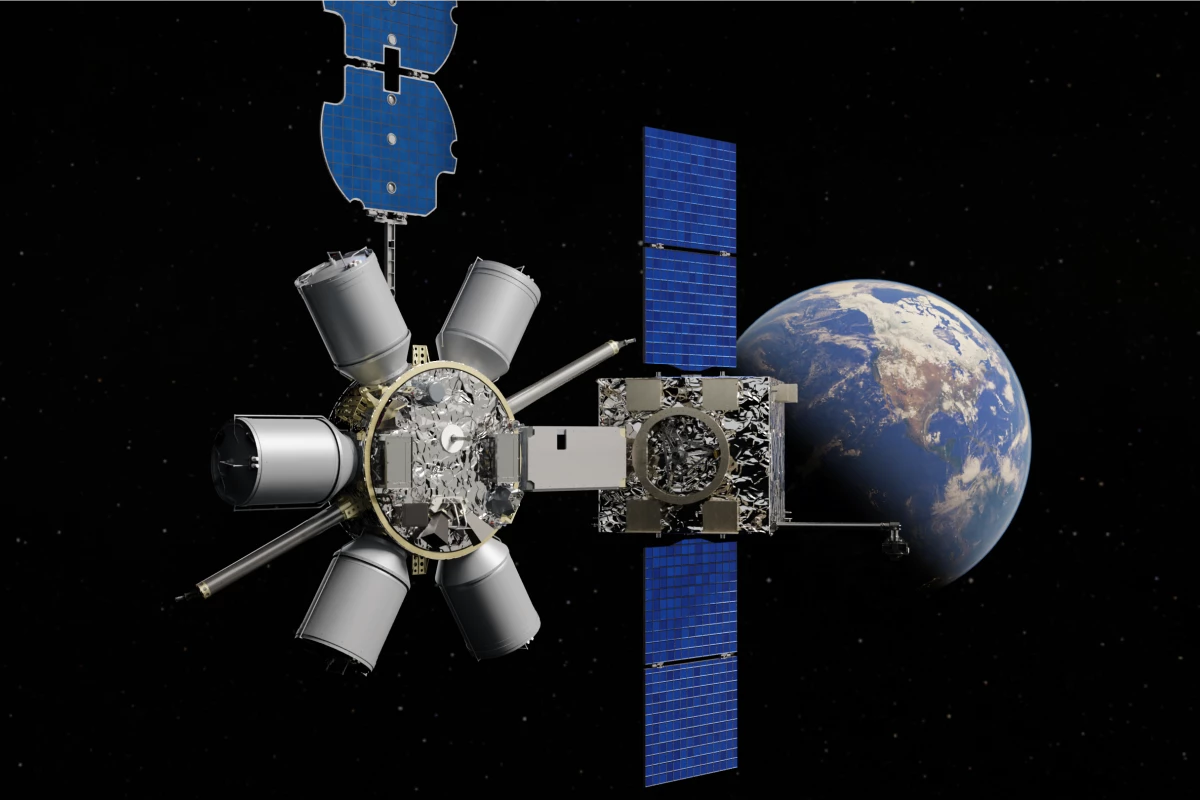Northrop Grumman's Passive Refueling Module (PRM) has been tapped by the US Space Force as the preferred model to set the standard for Space Force's Space Systems Command (SSC) to refuel satellites in orbit to extend their mission life.
Satellites can cost an eye-watering amount of money to build and send into orbit. Because of this, engineers work hard to make these space machines as long lived as possible. However, there is one limiting factor that's almost impossible to get around and that's the need for propellant.
Most satellites are not passive objects circling the Earth. They need to maintain an attitude to keep their solar panels pointed toward the Sun, their communications antennas toward the Earth, and to avoid going into a tumble. Many satellites also need to be able to adjust their orbits in order to move into a new trajectory or to counter the effects of orbital decay.
Unfortunately, all this eats up propellant and after a few years a multi-million dollar spacecraft that's still in perfectly good condition is as useless as a chocolate tea pot.
To avoid this, Northrop Grumman and other companies have been developing in-orbit servicing modules. These robotic spacecraft are able to dock with satellites that are running out of fuel and give them new life by acting as a supplemental propulsion system, providing additional capabilities, like a new power source, or even conducting minor repairs.
This is very attractive to the Space Force because its military satellites place a premium on propulsion. These assets need to be able to shift orbit frequently to survey a specific point on the Earth's surface, to investigate another spacecraft, or to evade a threat. Even if these maneuvers are only used in exercises, it's very expensive in terms of propulsion.
Being able to refuel is an obvious solution, but the problem is that developing the technology to do so requires a lot of standardization to make sure the systems are compatible with those of a visiting satellite looking for a top up. Otherwise, it would be like the all-too familiar scene of going to charge your smartphone only to find you've brought the wrong cable.
It's not a new problem. Space agencies have been dealing with standardization for over half a century – ever since the US and USSR had to come up with a common docking mechanism for the Apollo Soyuz mission of 1975, where an Apollo Command Module had to dock with a Soyuz spacecraft.
In the case of the Space Force and Northrop Grumman, the plan is to develop a common refueling system based on the PRM, which is a passive refueling depot that SSC satellites can dock with. This means that future SSC spacecraft will be equipped with an interface compatible with the PRM and a PRM will fly on a future operational mission for orbital tests.
The SSC is also funding Northrop Grumman to develop a Geosynchronous Auxiliary Support Tanker (GAS-T) orbital tanker.
"In an increasingly contested and congested space domain, on-orbit refueling will enable spacecraft to continue maneuvering to engage threats, avoid debris and extend the life of satellites," said Rob Hauge, president, SpaceLogistics, Northrop Grumman. "As the first and only company successfully providing commercial in-space servicing missions in GEO, we continue to collaborate with SSC and other government customers to mature in-space refueling capabilities."
Source: Northrop Grumman





